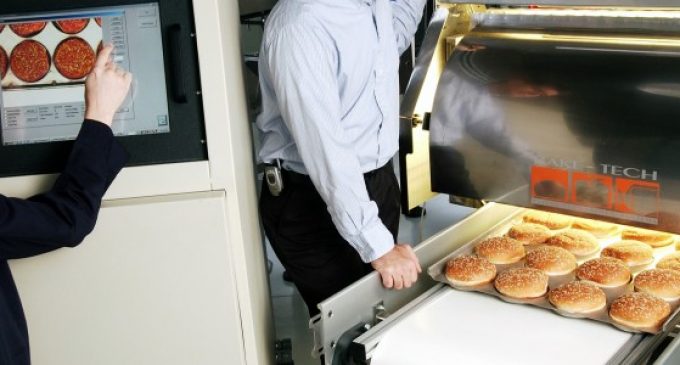Profitability declines by almost 30% for UK food and beverage manufacturers, new data finds

Small and mid-sized food and drink manufacturers in the UK are facing a ‘silent killer’ as new figures show profitability in both categories has dropped, despite strong sales. Alcoholic and non-alcoholic drinks manufacturers’ profitability dropped by almost 30% this fiscal year – the highest out of all sectors – despite seeing the biggest year-on-year revenue rise of all the manufacturing categories analysed at nearly 43%. Food manufacturers followed closely behind with a decline of 27% despite revenue rising by 4%.
On average, profitability across the manufacturing industry declined by 9.18% this fiscal year, despite sales performance rising by 9.16%.
The figures were revealed in the latest Manufacturers’ Health Index by inventory management software provider Unleashed. The figures are compiled quarterly based on data from purchases, sales and stock movements among SME manufacturers across the UK, Australia and New Zealand.
Josh Mordecai, Director of operations and business development for Good & Proper Tea, said: “The last two years have been really challenging from a margin perspective. We’ve seen price increases across the board, as have our suppliers, and sea freight has gone up. We want to make sure that our teas remain accessibly-priced for the quality, and the level of service that we provide, but at the same time, we need to maintain our margin and hopefully in time improve it.”
A recent report published by the Food and Drink Federation (FDF) highlights that production costs have risen on average by 9.2% for UK food and drink manufacturers, who are still battling a global skills shortage and limited investment.
However, some sectors are powering through including energy and chemical manufacturers who came out on top with a 31.37% jump in profitability according to Unleashed’s data, followed by furniture manufacturers at 21.89%.
Other signs of improvement came from the personal care sector where Q2 profitability was up 95.63% on Q1.
Sharp drop in quarterly sales revenue for UK manufacturers
UK sales performance also dropped sharply this quarter compared to the overall upward trend. Compared to Q1 2024, total revenue declined by 22% in Q2 2024.
Electrical and electronic component manufacturers’ revenue declined by 44% – the largest drop in revenue in Q2 2024. Building and construction manufacturers weren’t far behind with a revenue decline of 43%.
Clothing and footwear manufacturers were the only industries to see an increase in revenue of 5% in Q2 2024.
Despite profitability concerns, the industry has cut lead times down to an average of 23.5 days – the lowest level recorded.
Joe Llewellyn, GM of Cloud ERP at The Access Group, the parent company of Unleashed, said: “Conditions are tough – but the culture of innovation in the manufacturing sector has never been stronger. As manufacturers navigate the next 12 months I’m confident the firms that survive and thrive will be more resilient, more creative and more agile than any previous era has seen.”
Category breakdown
GMROI* (profitability): year-on-year change (fiscal year up to Q2 2024 – fiscal year up to Q2 2023)
|
Industry category |
Year-on-year change |
|
Beverages (alcoholic and non-alcoholic) |
-29.17% |
|
Food |
-27.02% |
|
Health, Medical Supplies and Equipment |
-26.66% |
|
Industrial Machinery, Raw Material and Equipment |
-25.63% |
|
Sport, Entertainment, Recreation |
-24.05% |
|
Electronics, Telecommunication |
-11.19% |
|
Personal Care |
-1.18% |
|
Clothing, Footwear, Accessories |
2.78% |
|
Building and Construction |
12.87% |
|
Electrical and Electronic Components |
17.47% |
|
Furniture, Fixtures, Home Furnishing (homeware) |
21.89% |
|
Energy, Chemicals |
31.37% |
|
All industries |
-9.18% |
GMROI (profitability): quarter-on-quarter change (Q2 2024 – Q1 2024)
|
Industry category |
Quarter-on-quarter change |
|
Food |
-38.17% |
|
Building and Construction |
-23.85% |
|
Health, Medical Supplies and Equipment |
-20.53% |
|
Industrial Machinery, Raw Material and Equipment |
-14.47% |
|
Sport, Entertainment, Recreation |
-1.29% |
|
Beverages |
13.45% |
|
Energy, Chemicals |
15.31% |
|
Electronics, Telecommunication |
17.03% |
|
Clothing, Footwear, Accessories |
19.82% |
|
Furniture, Fixtures, Home Furnishing (homeware) |
21.67% |
|
Electrical and Electronic Components |
22.19% |
|
Personal Care |
95.63% |
|
All industries |
-8.74% |
Sales revenue: year-on-year change (fiscal year up to Q2 2024 – fiscal year up to Q2 2023)
|
Industry category |
Year-on-year change |
|
Energy, Chemicals |
-22.27% |
|
Building and Construction |
-9.82% |
|
Health, Medical Supplies and Equipment |
-2.03% |
|
Industrial Machinery, Raw Material and Equipment |
1.44% |
|
Food |
4.04% |
|
Clothing, Footwear, Accessories |
7.35% |
|
Sport, Entertainment, Recreation |
16.67% |
|
Furniture, Fixtures, Home Furnishing (homeware) |
19.98% |
|
Personal Care |
25.34% |
|
Electronics, Telecommunication |
30.97% |
|
Electrical and Electronic Components |
38.67% |
|
Beverages (alcoholic and non-alcoholic) |
42.83% |
|
All industries |
9.16% |
Sales revenue: Quarter-on-quarter change (Q2 2024 – Q1 2024)
|
Industry category |
Quarter-on-quarter change |
|
Electrical and Electronic Components |
-44.12% |
|
Building and Construction |
-42.76% |
|
Furniture, Fixtures, Home Furnishing (homeware) |
-36.71% |
|
Health, Medical Supplies and Equipment |
-32.32% |
|
Personal Care |
-31.04% |
|
Energy, Chemicals |
-29.02% |
|
Electronics, Telecommunication |
-28.53% |
|
Sport, Entertainment, Recreation |
-21.06% |
|
Food |
-17.42% |
|
Industrial Machinery, Raw Material and Equipment |
-15.21% |
|
Beverages (alcoholic and non-alcoholic) |
-5.64% |
|
Clothing, Footwear, Accessories |
4.89% |
|
All industries |
-21.82% |
View the full Unleashed Manufacturing Health Index.
The Manufacturing Health Index assesses SME manufacturer performance via a big data approach. Starting with a cohort of 1,282 manufacturers in the UK, Australia and New Zealand, the Q1 2024 report draws on data from every purchase, sale and stock movement made by each business in the study between Q1 2018 and Q2 2024.
*Gross Margin Return On Inventory (GMROI), also known as Gross Margin Return On Inventory Investment, is a profitability evaluation ratio that analyses a firm’s ability to turn inventory into cash above the cost of the inventory. It doesn’t take into account the costs of labour, sales and marketing activities.
-
GMROI shows how much profit inventory sales produce after covering inventory costs.
-
A higher GMROI means each unit of inventory is generating a higher profit.

























